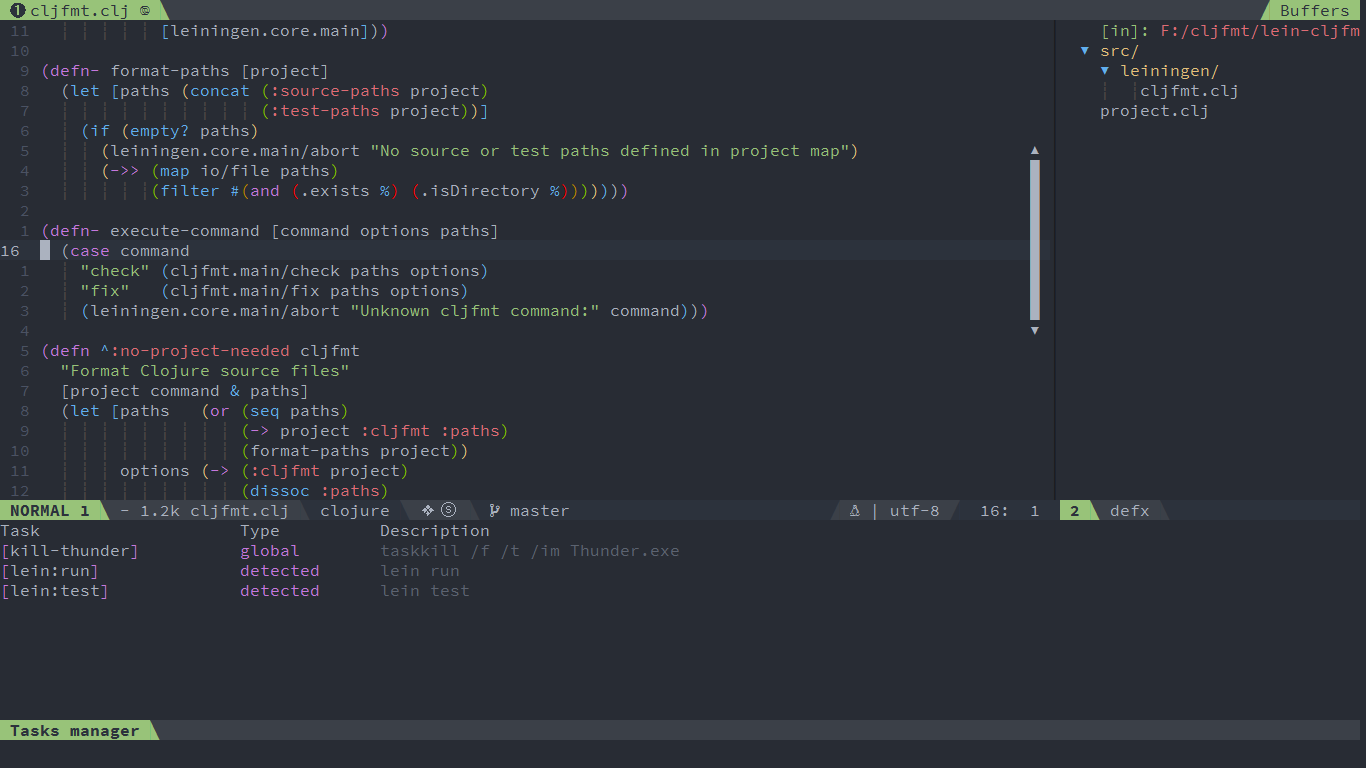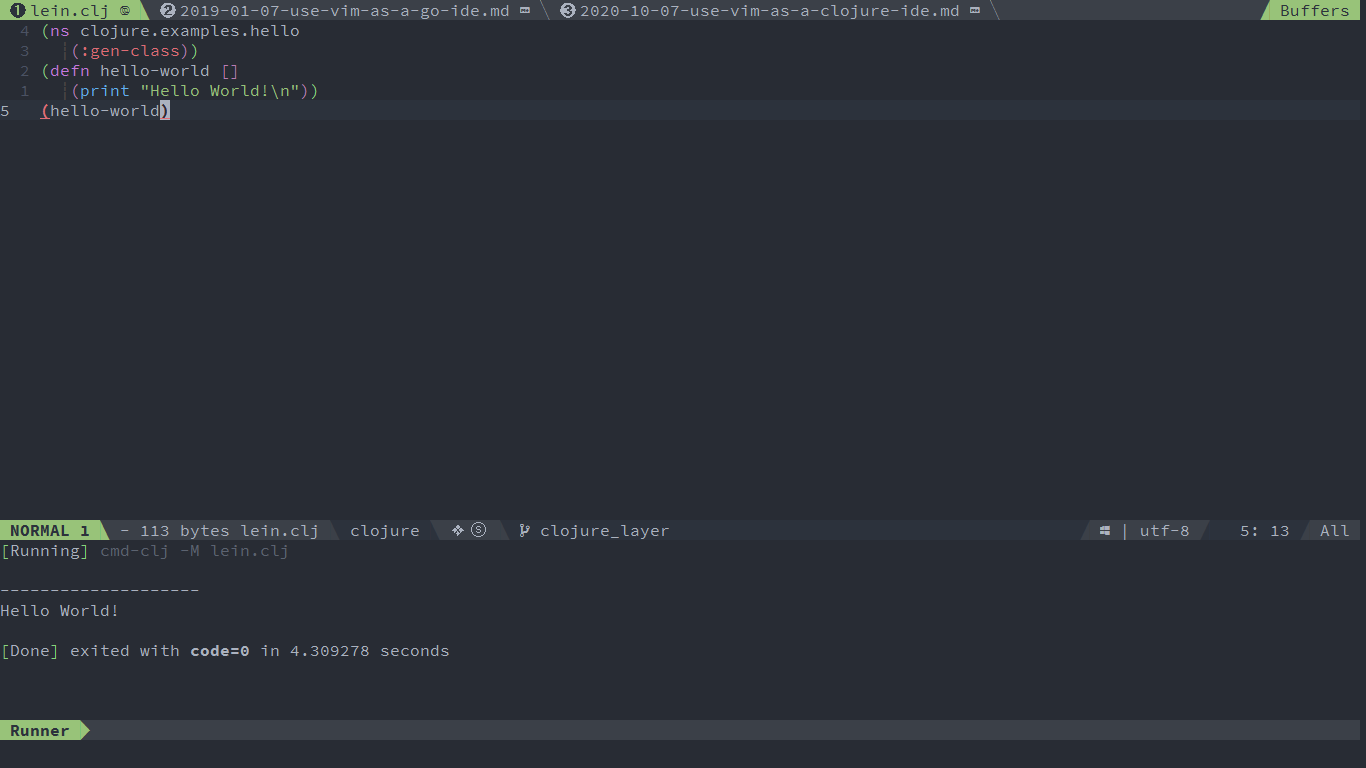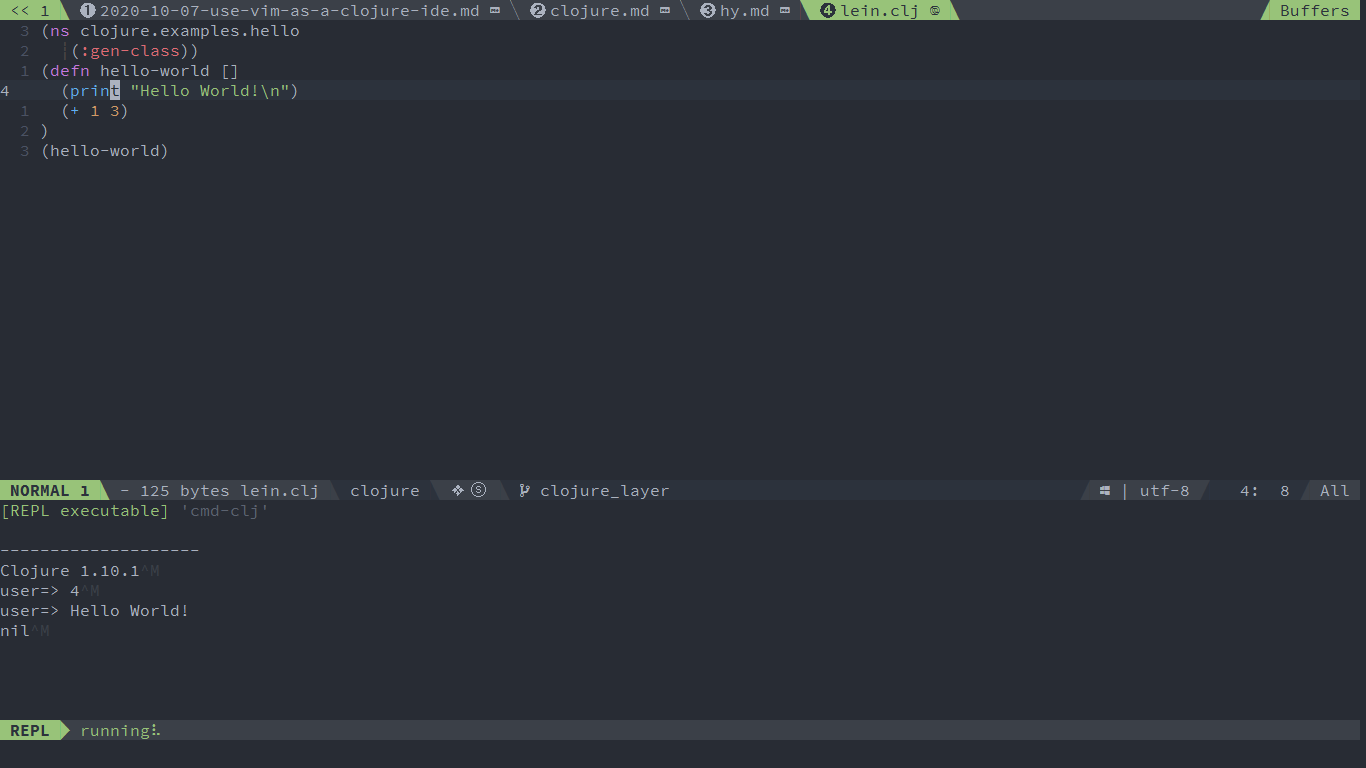4.5 KiB
| title | categories | image | description | type | comments | commentsID | ||
|---|---|---|---|---|---|---|---|---|
| Use Vim as a Clojure IDE |
|
https://img.spacevim.org/95338841-f07a1e00-08e5-11eb-9e1b-6dbc5c4ad7de.png | A general guide for using SpaceVim as Clojure IDE, including layer configuration, requiems installation and usage. | article | true | Use Vim as a Clojure IDE |
Blogs >> Use Vim as a Clojure IDE
This is a general guide for using SpaceVim as a Clojure IDE, including layer configuration and usage. Each of the following sections will be covered:
- Enable language layer
- code completion
- Language server
- alternate file jumping
- code running
- REPL support
- code format
- Tasks manage
Enable language layer
lang#clojure layer provides clojure language specific features for SpaceVim.
This layer is not enabled by default. To write clojure language,
you need to enable the lang#clojure layer.
Press SPC f v d to open SpaceVim configuration file, and add following configuration:
[[layers]]
name = 'lang#clojure'
for more info, you can read the lang#clojure layer documentation.
code completion
By default the autocomplete layer has been enabled, so after loading lang#clojure layer, the code completion
for clojure language should work well.
Language server
There are two ways to configure the clojure language server protocol.
neovim(>=0.5.0)
If you are using nvim(>=0.5.0). You need to use enabled_clients to specific the language servers.
for example:
[[layers]]
name = 'lsp'
enabled_clients = ['clojure_lsp']
To override the command of client, you may need to use override_client_cmds option:
[[layers]]
name = "lsp"
enabled_clients = ['clojure_lsp']
[layers.override_client_cmds]
clojure_lsp = ['clojure-lsp']
You need to install clojure-lsp.
scoop install clojure-lsp
vim or neovim(<0.5.0)
To enable language server protocol support, you may need to enable lsp layer.
[[layers]]
name = "lsp"
filetypes = [
"clojure"
]
[layers.override_cmd]
clojure = ['clojure-lsp']
alternate file jumping
To manage the alternate file for a project, you may need to create a .project_alt.json file in the root of your
project.
for example, add following content into the .project_alt.json file:
{
"src/*.clj": {"alternate": "test/{}.clj"},
"test/*.clj": {"alternate": "src/{}.clj"}
}
with this configuration, you can jump between the source code and test file via command :A
code running
The default code running key binding is SPC l r. It will run clojure -M current_file asynchronously.
And the stdout will be shown on a runner buffer.
REPL support
lang#clojure layer provides key bindings for REPL support of clojure language.
You can Start a clojure inferior REPL process with SPC l s i. After REPL process started,
you can send code to clojure process via key bindings:
| Key Bindings | Descriptions |
|---|---|
SPC l s b |
send buffer and keep code buffer focused |
SPC l s l |
send line and keep code buffer focused |
SPC l s s |
send selection text and keep code buffer focused |
code format
The format layer use neoformat as default tool to format code, it will run cljfmt on current file.
And the default key binding is SPC b f.
[[layers]]
name = "format"
Tasks manage
SpaceVim will detect lein project tasks automatically. If there is project.clj file in the root directory
of your project. following tasks will be detected:
To select a task to run, use key binding SPC p t r, you can also use SPC p t l to list all the tasks
in the tasks manager window.



